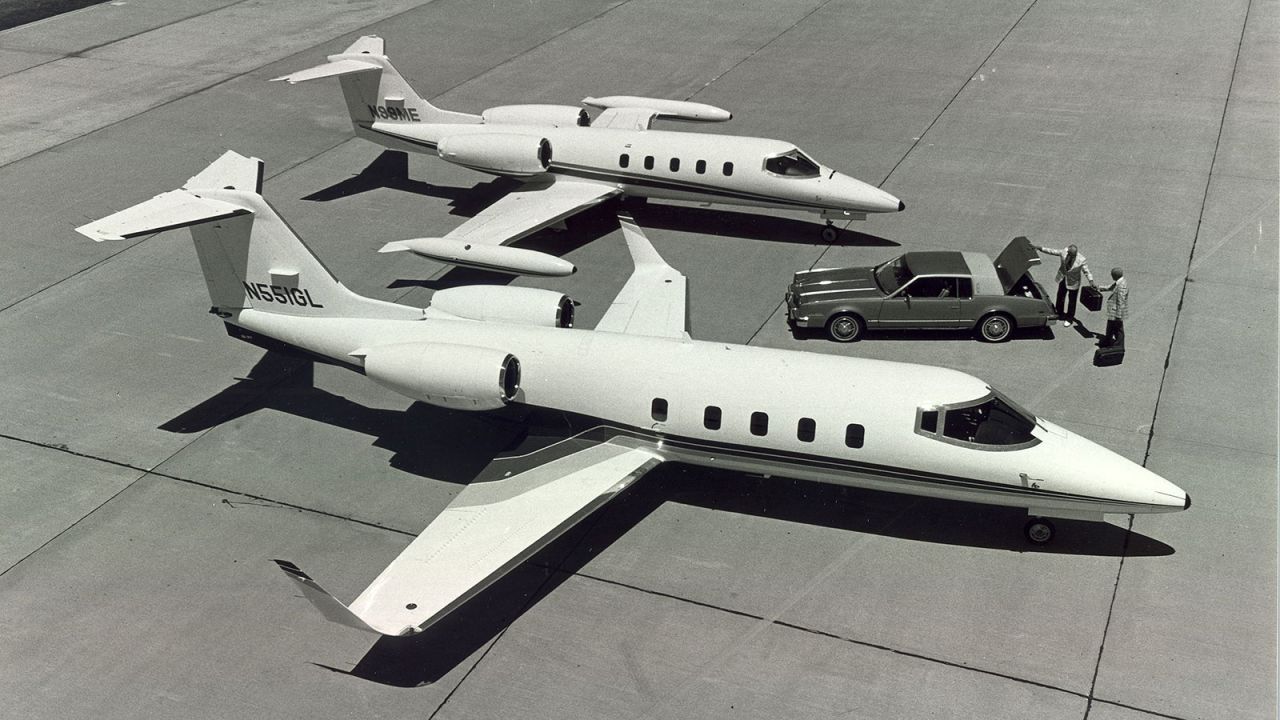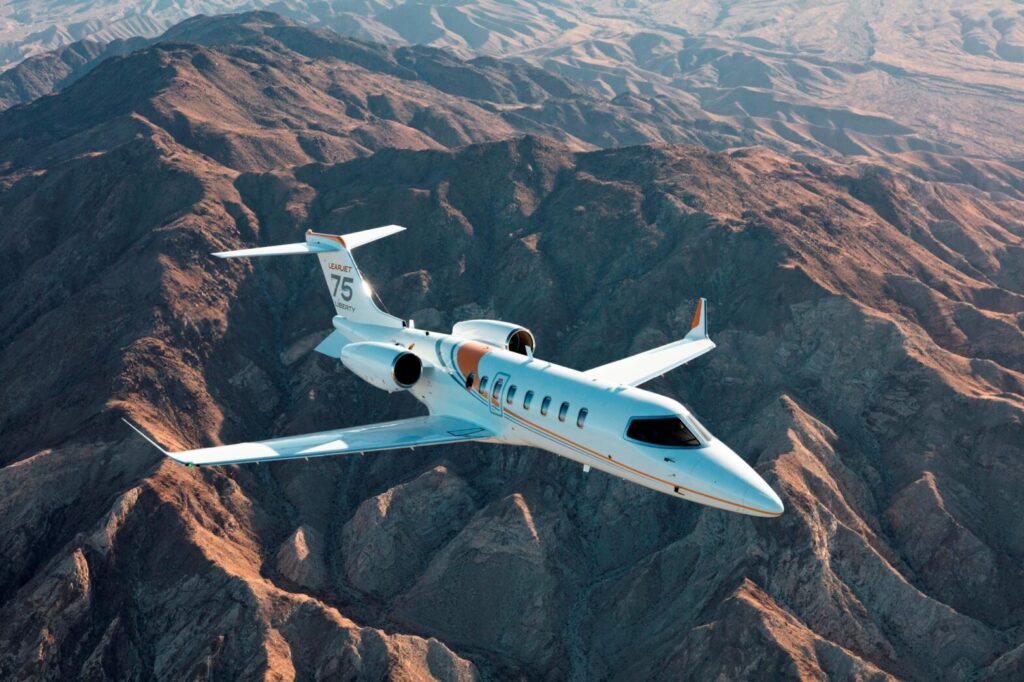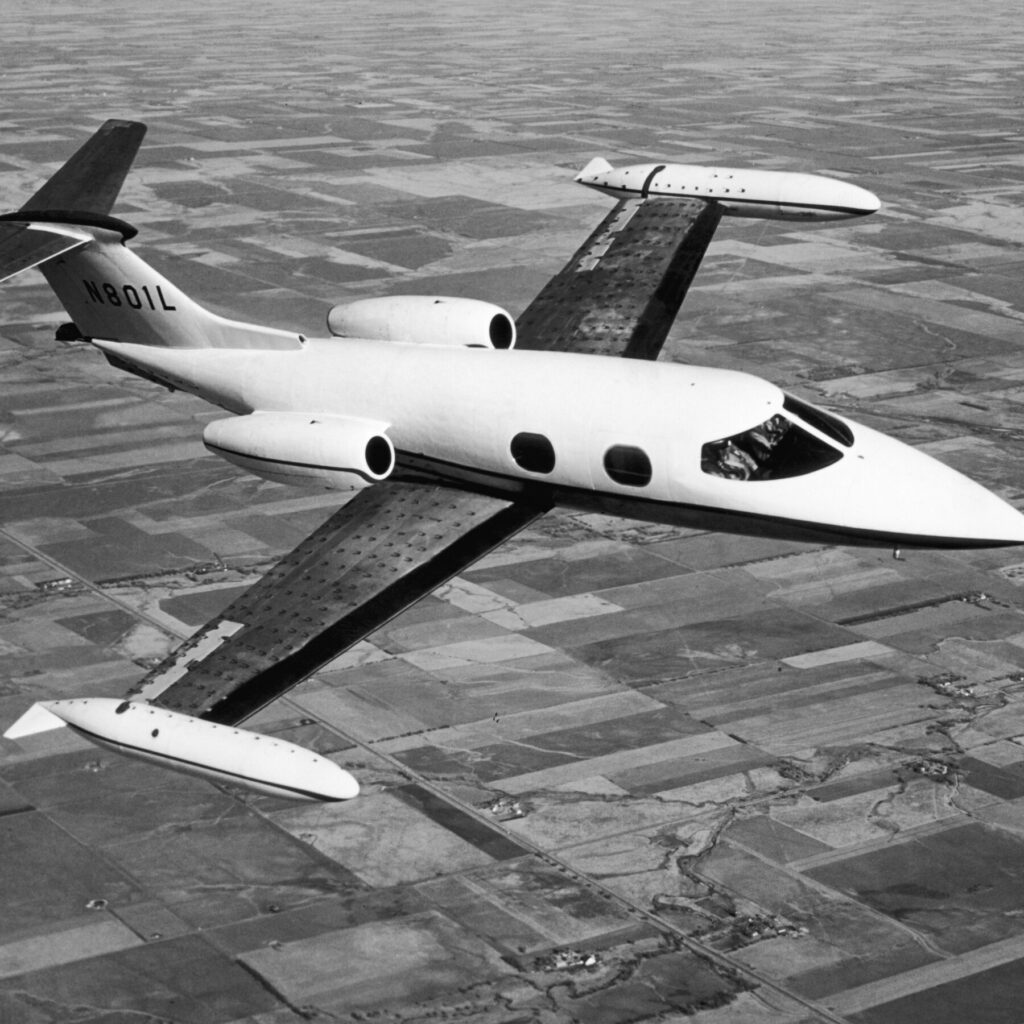
Learjet is a name that is synonymous with luxury private aviation. The company’s origins date back to the 1950s, when a young engineer named Bill Lear set out to revolutionize the aviation industry. Over the years, Learjet has become a household name, and its jets are among the most iconic and recognizable aircraft in the world. In this article, we’ll take a closer look at the history of Learjet, from its humble beginnings to its status as a global leader in private aviation.
Early Years
The story of Learjet begins in the early 1950s, when Bill Lear began tinkering with aviation technology in his spare time. Lear had already made a name for himself in the electronics industry, having invented the first practical car radio in 1929. He had also worked on numerous other inventions, including the eight-track tape player, and had founded the Lear Avia aircraft company in 1949.
Lear was fascinated by the idea of creating a jet-powered aircraft that could be used for private transportation. At the time, commercial jet travel was still in its infancy, and there were few options available for private aviation. Lear saw an opportunity to create a new market for high-end private jets, and he set out to build a prototype.

The Learjet 23
In 1963, Lear unveiled his first production model, the Learjet 23. The 23 was a small, sleek aircraft that could carry up to eight passengers at speeds of up to 500 miles per hour. The jet was a game-changer in the aviation industry, offering unprecedented speed, range, and comfort for private travelers.
The Learjet 23 was an instant success, and it quickly became the go-to aircraft for wealthy individuals, corporations, and governments around the world. The jet’s compact size and impressive performance made it ideal for a wide range of uses, from executive transportation to military reconnaissance.
Expansion and Innovation
In the years that followed, Learjet continued to expand its product line and innovate new technologies. The company introduced a range of new models, including the Learjet 25, 35, and 55, each with its own unique features and capabilities.
One of Learjet’s most significant innovations came in 1971, when the company introduced the Lear Fan, a revolutionary new aircraft that featured a unique composite construction and advanced engine technology. The Lear Fan was intended to be a more affordable alternative to Learjet’s existing line of jets, but the project ultimately proved to be too ambitious, and Learjet was forced to abandon the program.
Despite this setback, Learjet continued to innovate, introducing new technologies and design features that helped to establish the company as a leader in private aviation. In the 1980s, Learjet introduced the Learjet 31, a faster and more efficient version of the Learjet 28. The 31 featured a new wing design and more powerful engines, which allowed it to fly at speeds of up to 540 miles per hour.
Acquisitions and Partnerships
Throughout its history, Learjet has undergone numerous changes in ownership and management. In 1987, the company was acquired by Integrated Acquisition Inc., a subsidiary of the Gates Corporation. Under new ownership, Learjet continued to expand its product line and improve its technology, introducing new models like the Learjet 45 and 60.
In 1990, Learjet formed a partnership with the French aerospace company Dassault, which led to the development of the Learjet 85. The 85 was a new, mid-sized jet that was designed to compete with other aircraft in its class, offering superior speed, range, and comfort. Unfortunately, the project was plagued by delays and setbacks, and it was ultimately canceled in 2012.
Despite these setbacks, Learjet has remained a prominent player in the private aviation industry. In 1992, the company was acquired by Bombardier Aerospace, a Canadian aircraft manufacturer. Bombardier invested heavily in Learjet, helping to modernize the company’s facilities and technology. Under Bombardier’s ownership, Learjet introduced a range of new models, including the Learjet 40, 45, and 60.
One of Learjet’s most significant recent achievements came in 2012, when the company introduced the Learjet 70 and 75. These new models were designed to replace the Learjet 40 and 45, respectively, and featured improved performance, range, and comfort. The Learjet 70 and 75 were also more environmentally friendly than previous models, thanks to their advanced engine technology and reduced carbon emissions.

Learjet Today
Today, Learjet remains a prominent player in the private aviation industry, with a reputation for quality, luxury, and innovation. The company’s products are used by a wide range of clients, including wealthy individuals, corporations, and governments. Learjet aircraft are known for their speed, comfort, and range, making them ideal for a variety of applications, from executive transportation to emergency medical services.
Learjet’s success over the years can be attributed to a combination of factors, including its innovative technology, sleek design, and commitment to quality. The company has always been at the forefront of aviation technology, introducing new innovations and design features that have helped to shape the industry as a whole.
Learjet’s history is a testament to the power of innovation and determination. Bill Lear’s vision for a private jet revolutionized the aviation industry and created a new market for luxury transportation. Over the years, Learjet has continued to innovate and improve, introducing new technologies and design features that have kept the company at the forefront of private aviation.
In recent years, Learjet has continued to focus on improving its product line to meet the evolving needs of the private aviation market. In 2019, the company introduced the Learjet 75 Liberty, which was designed to offer a lower-cost option for customers while still maintaining the high quality and performance standards of the Learjet brand. The Learjet 75 Liberty offers a range of up to 2,080 nautical miles and a top speed of Mach 0.81, making it an ideal option for short to medium-range flights.
Learjet has also made significant investments in research and development to ensure that its products remain at the forefront of aviation technology. In 2020, the company announced a partnership with GE Aviation to develop a new engine for the Learjet 75 Liberty. The new engine, called the GE Catalyst, is designed to offer improved fuel efficiency and reduced emissions while still delivering the high performance that Learjet customers expect.
Despite its success and innovation, Learjet has faced challenges in recent years. In 2020, Bombardier announced that it would be discontinuing the Learjet line, citing a lack of demand for the high-end private jets. This decision marked the end of an era for Learjet and the private aviation industry as a whole.
However, Learjet’s legacy lives on, and the impact that the company has had on aviation cannot be overstated. From its early days as a small startup to its position as a global leader in private aviation, Learjet has always been driven by a commitment to innovation and excellence. Its aircraft have become icons of luxury and performance, and its influence on the aviation industry will continue to be felt for generations to come.
Today, Learjet is a global leader in the industry, with a reputation for quality, luxury, and innovation. The company’s products are among the most iconic and recognizable in the world, and its aircraft continue to set the standard for performance, comfort, and range. As the company looks to the future, it remains committed to pushing the boundaries of aviation technology and delivering the ultimate in luxury and comfort for its clients.
In conclusion, the history of Learjet is a story of innovation, determination, and excellence. Bill Lear’s vision for a private jet revolutionized the aviation industry and created a new market for luxury transportation. Over the years, Learjet has continued to innovate and improve, introducing new technologies and design features that have kept the company at the forefront of private aviation. While the company may no longer be producing aircraft, its legacy lives on, and Learjet will always be remembered as a pioneer and leader in the private aviation industry.


No Comments